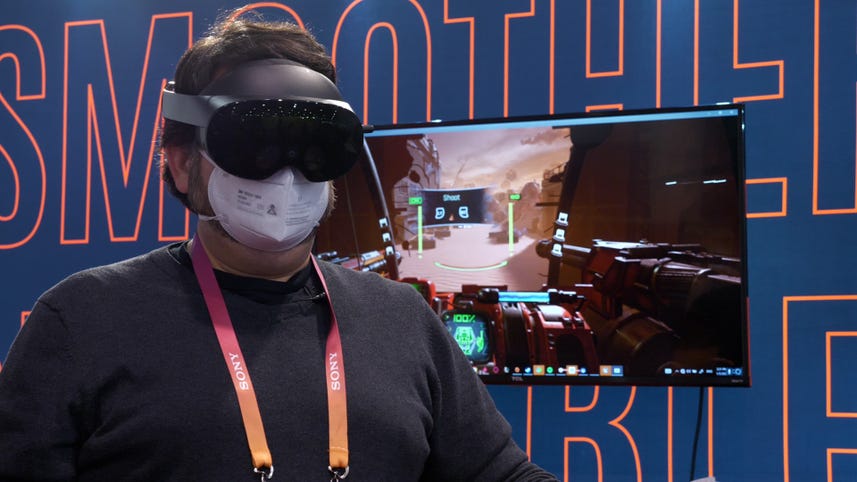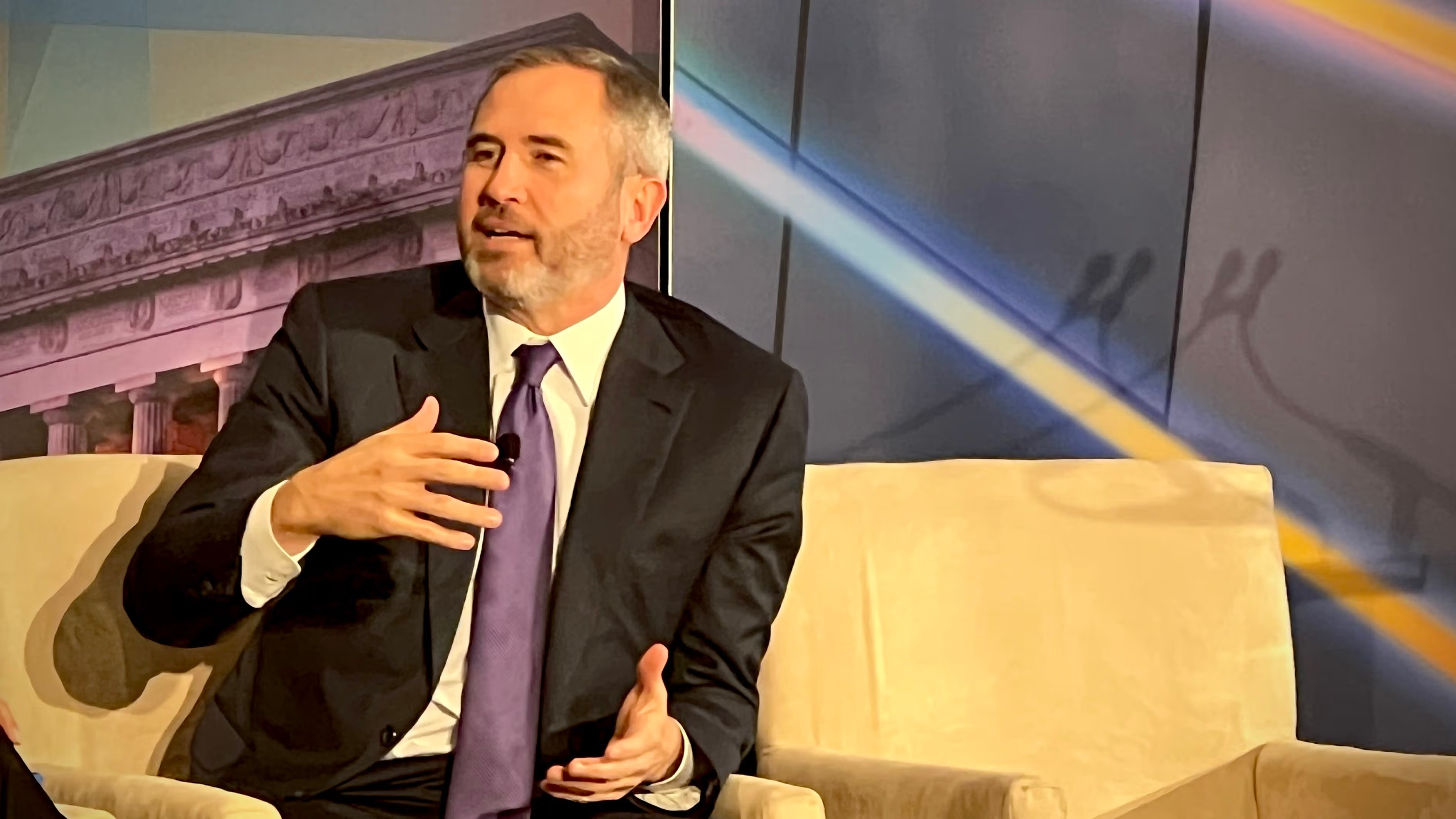
Speaker 1: The Metaverse, what is it? Where’s it going? Who’s using it? How do we define it? Nobody really knows. I mean, right now we’re at a point where everybody’s trying to figure out this immersive future. There are definitions of the metaverse, but a lot of it is software and a lot of it is still emerging hardware. We’re at the beginning of 2023 where a lot of devices like PlayStation, VR two, the Quest three, um, Apple’s expected headset are supposed to arrive this year and a whole bunch of others. We don’t know a lot, a lot of that stuff [00:00:30] yet, but we are getting peaks at what some of the players around the landscape are thinking about. And here’s what we’re starting to notice.
Speaker 1: Aside from the questions of the Metaverse, there’s a lot of interactive stuff and a lot of concepts that are pointing to some things that we’re getting to think about. I also tried some really weird stuff too, like this crazy control chair that put me in a neck suit that I could push forward on. And it was supposed to help me with motion sickness and I don’t know, it could be good in an arcade. I wanted to [00:01:00] hunt out a couple of particular things that I had heard about first mixed reality headsets and hardware. Two things caught my eye. One is the links. R one. This is a startup small company that makes a little tiny flip down ar headset, mixed reality headset that’s now shipping. Unlike something like the Meta Quests Pro, this is really small and has a tiny flip down visor that fits really nicely over my glasses.
Speaker 1: Also, it’s not quite the same level of mixed reality, um, that [00:01:30] I saw on the Quest Pro, but it’s good enough to use color pass through cameras, layer things on top of it, and, you know, possibly do it in a much smaller size. I also took a look at the Pyx portal. This company you’ve never heard of, that’s making a, the Nintendo Switch meets VR device that has a switch like tablet, that’s an Android gaming device that will detach and go into a set of VR goggles. This reminds me of the story of stuff that you would’ve seen back in the days of Gear vr, but PAX is a VR company that’s looking to optimize this [00:02:00] to work better. I just think it’s an interesting idea because what if future Nintendo switches or other types of devices start doing this better? Maybe that phone tablet, VR comes back.
Speaker 1: I’m also really interested in haptics and inputs. There’s a lot of that here at ces. One thing I saw that isn’t really VR at all is the Razor Project Carroll. Project Carroll’s, a vibrating sound headrest that goes in the back of a desk chair. It’s razor’s, you know, new secret project idea that may not really come to market or may come to market soon. [00:02:30] It’s, it’s something to create like nearfield surround. I wanted to check it out. I sat back in a chair, sounded really nice, felt comfortable. The movie sounded good. I wanted to nap. I actually, it feels like it makes sense if you don’t wanna set up speakers in your home, I don’t know what it’ll cost. I don’t know when it’ll come out. Haptics. The idea of being able to control or input things beyond just controllers is something that will start to become a question as we do things like AR glasses or think about how to walk around and interact with [00:03:00] things.
Speaker 1: I saw things on three ends of the spectrum. Haptics makes these massive $80,000 pressure base liquid pneumatic resistance rigs that I put on my hands and I played VR Jenga. It’s crazy experience. It’s weird. It feels like we throw 133 different pressure zones that it’s like touching you with fingers and I could feel stuff on my hand and I played with someone else and I felt their finger against my hand and my finger bent back weirdly, but I could feel it on the, anyway, it’s very extra sensory. But this [00:03:30] type of technology requires a massive pressure backpack. Although haptics is going to be making a pair of standalone $5,000 ones, what a bargain that will be coming out that will allow you to interact with, with things on the go. The goal is to make these smaller. This is kind of like the the dream goal for for haptics.
Speaker 1: Then you get into more affordable, uh, ones that you serve. A vi tactile type of a buzzing feedback be haptics. The tact gloves are ones that are, are much smaller, about $300, and they work with [00:04:00] the Quest too. They’re really cool. They do give a sense of feedback. However, they don’t do any of that cool pressure based feedback all around your hand. They’re just giving you a little buzz. But if you press a button, you do things like that. They actually do give a sense of feedback. But what about no haptic gloves at all? Ultra Leave has a demonstration they’ve been showing for years of using ultrasound or ultrasonics. To give you a sense of vibrating feedback when you pass your hand over a sensor, this type of technology is almost [00:04:30] like some superpowered version of holding your hand over a fan. You know, you can kind of feel blasts of stuff that begin to create a buzzing feedback.
Speaker 1: Now, right now Ultra Leaf is putting this technology into cars or they’re looking for other types of interfaces. It’s quite an array to assemble. But what if this technology were to go into headsets? What if you could actually project that field out and then as you were to interact with stuff, get little buzzing bits of feedback that let me know when I’m doing stuff. Right now, when [00:05:00] you do hand tracking in VR and ar, it’s hard to tell when you did it right and when you did it wrong. I think the goal is that eventually you could put this in headsets. That’s what Ultra Leap wants to do. But when you’d have to shrink it down even further and figure out how not to overtax the battery, and those are some of the wildest things that I saw at the show and they got me thinking about the future.
Speaker 1: I mean, sure you’ve got crazy panoramic displays, hovering holograms, roller coaster rides and things like that. And we didn’t even get into the fact that you’re at a show like this and none of the big players [00:05:30] are here. You know, where’s Meta? Where’s Apple obviously, where’s Google? That’s still laying quiet. What about Samsung? All these people in the landscape that are going to be making different projects and different products that will start to determine where we’re going. I didn’t even get into Microsoft or Amazon, but these players around that are showing where the thinking is going. And plus, what about air glasses? They’re getting smaller, much smaller. I looked at a pair from Vsx that was, was using micro l e d and they’re as light and as [00:06:00] small as my glasses, which is crazy. I mean, they really felt tiny and I think they’re gonna get tinier, so they’re gonna get small, but how powerful will they be? Will they be able to run off your phone? That’s gonna take a couple of years, but we’re getting closer. And as far as the rest of the software in the Metaverse, it’s a wait and see. So those are are some observations and thoughts. At the very beginning of 2023. There’s a whole bunch more to come. What do you find interesting? What do you find fascinating? What do you find annoying? Let us know below the comments. Make sure to let and subscribe. Thanks for [00:06:30] watching.
Read More: news.google.com









 Bitcoin
Bitcoin  Ethereum
Ethereum  Tether
Tether  XRP
XRP  Solana
Solana  Dogecoin
Dogecoin  USDC
USDC  Cardano
Cardano  Lido Staked Ether
Lido Staked Ether  TRON
TRON  Avalanche
Avalanche  Sui
Sui  Wrapped stETH
Wrapped stETH  Toncoin
Toncoin  Chainlink
Chainlink  Shiba Inu
Shiba Inu  Wrapped Bitcoin
Wrapped Bitcoin  Stellar
Stellar  Hedera
Hedera  Polkadot
Polkadot  WETH
WETH  LEO Token
LEO Token  Bitcoin Cash
Bitcoin Cash  Litecoin
Litecoin  Uniswap
Uniswap  Pepe
Pepe  Hyperliquid
Hyperliquid  Wrapped eETH
Wrapped eETH  Ethena USDe
Ethena USDe  USDS
USDS  NEAR Protocol
NEAR Protocol  Internet Computer
Internet Computer  Aptos
Aptos  Aave
Aave  Mantle
Mantle  POL (ex-MATIC)
POL (ex-MATIC)  Cronos
Cronos  Ethereum Classic
Ethereum Classic  MANTRA
MANTRA  Render
Render  Bittensor
Bittensor  Monero
Monero  Tokenize Xchange
Tokenize Xchange  Dai
Dai  Artificial Superintelligence Alliance
Artificial Superintelligence Alliance  Virtuals Protocol
Virtuals Protocol  Arbitrum
Arbitrum